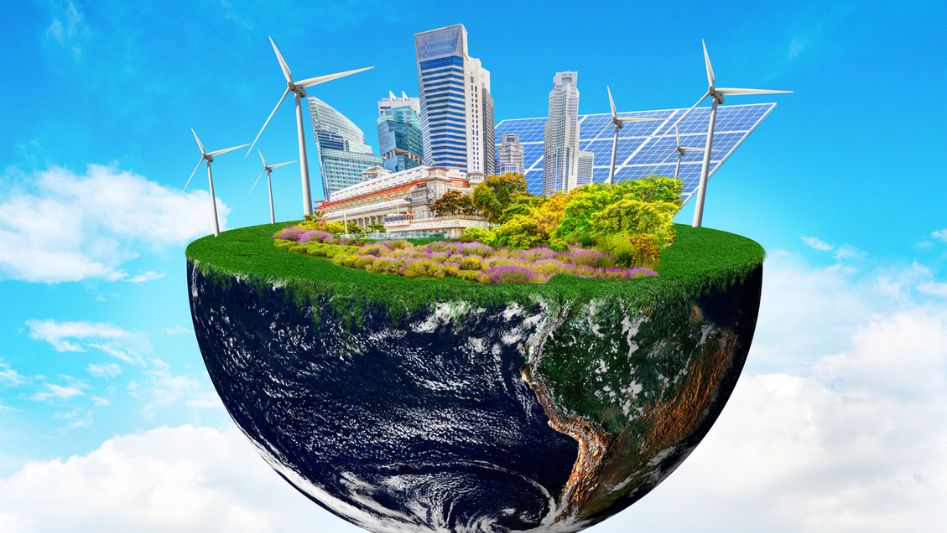In a rapidly evolving world, the pursuit of sustainable and clean energy solutions has taken center stage. One of the most promising developments in this quest is the rise of eco-innovations. These groundbreaking advancements are revolutionizing the green energy landscape, presenting a hopeful outlook for a cleaner and more sustainable future. This article dives deep into the realm of eco-innovations, shedding light on their significance, benefits, and potential to reshape our energy paradigm.
Table of Contents
- Eco-Innovations: The Dawn of a Green Revolution
- Harnessing Solar Power: Beyond Traditional Panels
- Wind Energy Redefined: The Power of Vertical Turbines
- The Promise of Kinetic Energy: Paving the Way for Motion-Powered Solutions
- Tapping into Bio-Energy: Waste as a Resource
- Revolutionizing Hydropower: Small-Scale Hydropower Systems
- Energy Storage Innovations: Beyond Batteries
- Electrifying Transportation: The Road to Greener Mobility
- Building-Integrated Vegetation: Green Roofs and Walls
- Enhancing Energy Efficiency: Smart Buildings and Grids
- Conclusion
- FAQs

Eco-Innovations: The Dawn of a Green Revolution
Eco-innovations, often hailed as the next big thing in green energy, encompass a range of cutting-edge technologies and creative solutions that prioritize environmental sustainability. These innovations tackle challenges related to energy production, consumption, and conservation. They represent a paradigm shift in how we harness and utilize resources, aiming to minimize our ecological footprint.
Harnessing Solar Power: Beyond Traditional Panels
Traditional solar panels have been instrumental in harnessing solar energy, but eco-innovations are taking this concept to new heights. Solar Skin Technology is a remarkable example that seamlessly integrates solar cells into building materials, making every surface a potential energy generator. This advancement not only enhances energy production but also contributes to architectural aesthetics.
Wind Energy Redefined: The Power of Vertical Turbines
Wind energy has long been a renewable energy staple, and now, eco-innovations are redefining its potential. Vertical axis wind turbines are emerging as a game-changer. Unlike their horizontal counterparts, these turbines can operate efficiently regardless of wind direction, opening up opportunities for urban installations and expanding the reach of wind power.
The Promise of Kinetic Energy: Paving the Way for Motion-Powered Solutions
Kinetic energy harvesting is a groundbreaking concept that capitalizes on motion to generate electricity. From sidewalks that capture footsteps to roads that harvest the energy of passing vehicles, this innovation holds immense promise. Imagine cities powered by the very movements of their residents and visitors, reducing the demand on traditional energy sources.
Tapping into Bio-Energy: Waste as a Resource
Waste-to-energy technologies have gained traction, and eco-innovations are tapping into this potential. Bio-energy converters are capable of transforming organic waste into biogas or biofuels through a process known as anaerobic digestion. This not only addresses waste management challenges but also provides an alternative energy source, reducing our reliance on fossil fuels.
Revolutionizing Hydropower: Small-Scale Hydropower Systems
Hydropower has been a reliable renewable energy source, but large-scale dams come with environmental concerns. Small-scale hydropower systems offer a more sustainable approach. By harnessing the energy of natural water flows without the need for massive dams, these systems minimize ecological disruption while providing clean energy to local communities.

Energy Storage Innovations: Beyond Batteries
Energy storage is a crucial aspect of a sustainable energy ecosystem. Gravitational energy storage is an exciting innovation that stores energy by lifting heavy weights and releasing them when needed. This unique approach offers a cost-effective and efficient solution to store excess energy generated by renewable sources and release it during peak demand.
Electrifying Transportation: The Road to Greener Mobility
The transportation sector is a major contributor to emissions, and eco-innovations are electrifying this landscape. Wireless charging roads for electric vehicles are a visionary concept. As vehicles travel along these roads, they are charged wirelessly, extending their range and reducing the need for frequent recharging stops.
Building-Integrated Vegetation: Green Roofs and Walls
Green roofs and walls have gained popularity as eco-innovations that merge architecture with nature. These installations not only enhance the aesthetic appeal of buildings but also provide insulation, improve air quality, and absorb rainwater. The integration of vegetation into urban design is a testament to the creative solutions eco-innovations bring to sustainability challenges.
Enhancing Energy Efficiency: Smart Buildings and Grids
Smart buildings and grids are redefining the way we manage and consume energy. Through advanced sensors, automation, and data analysis, these innovations optimize energy usage, reducing waste and costs. The synergy between intelligent infrastructure and eco-innovations paves the way for a more energy-efficient future.

Conclusion
Eco-innovations stand as a beacon of hope in our journey towards a greener and more sustainable future. These transformative technologies are breaking barriers, redefining industries, and inspiring individuals to embrace clean energy solutions. As eco-innovations continue to evolve and expand, they pave the way for a world where environmental stewardship and technological advancement go hand in hand.
FAQs
How do eco-innovations differ from traditional green energy solutions?
Eco-innovations go beyond conventional approaches by exploring creative and advanced technologies that address energy challenges in novel ways.
Are eco-innovations cost-effective?
While initial implementation costs can vary, many eco-innovations offer long-term cost savings through increased efficiency and reduced reliance on non-renewable resources.
Can individuals contribute to the adoption of eco-innovations?
Absolutely! Supporting eco-innovations can be as simple as choosing products and services that utilize sustainable energy solutions, such as solar-powered gadgets or energy-efficient appliances.
Are eco-innovations scalable for widespread impact?
Yes, many eco-innovations are designed with scalability in mind. As technology advances and adoption increases, their impact can extend globally.
You May Also Like
- GREEN ENERGY TRENDS TO WATCH: LEADING THE CHARGE TO SUSTAINABILITY
- THE ECONOMICS OF GREEN ENERGY: INVESTING IN A SUSTAINABLE FUTURE
- CLEAN, GREEN, AND EFFICIENT: THE ADVANTAGES OF GREEN ENERGY
- UNLOCKING ITALY’S GREEN ENERGY POTENTIAL: THE NEED FOR HARMONIZED RULES
- ECO-FRIENDLY SOLUTIONS: HOW GREEN ENERGY IS CHANGING THE WORLD
External Links
- Everything You Need to Know About Green Technology in 2023
- Top 10 Innovative Technologies in Sustainable Energy Sector
- Top 10 Renewable Energy Trends & Innovations in 2023
- Infrastructure solutions: Power for clean energy innovation
- What are the new eco-innovations and green technologies that could mitigate the negative effects of the energy crisis?
